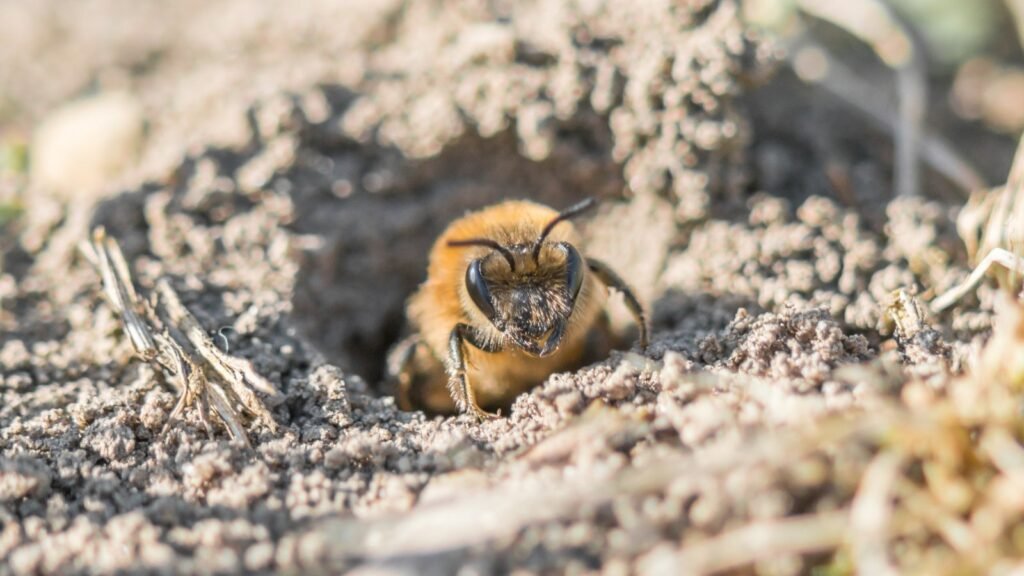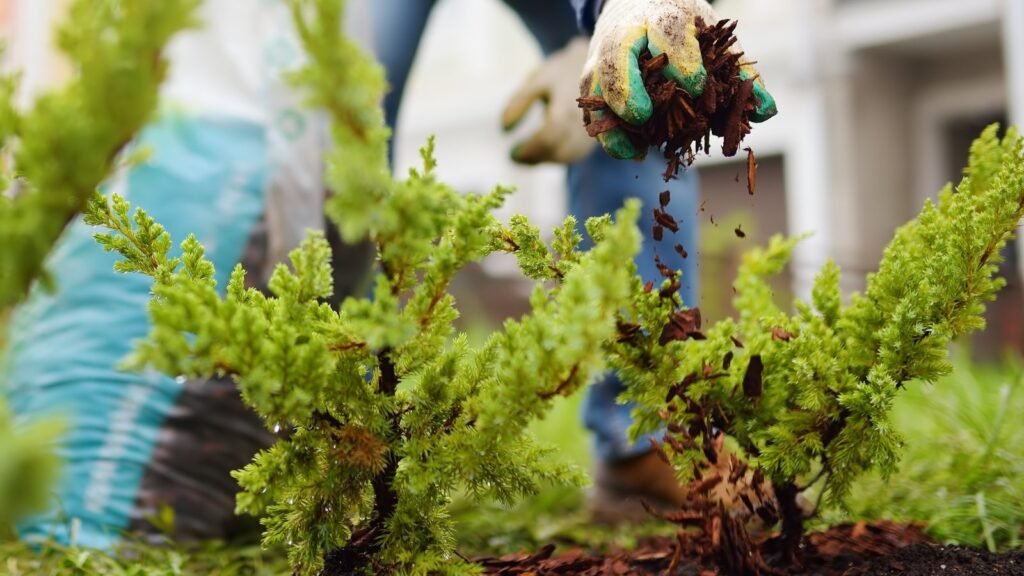Fall is for enjoying time outside, playing, gathering, and taking in the season’s changes. A grassy spot lets us do all of these, providing places to relax while taking in sweeping views.
While the fall lawn isn’t as flashy as autumnal arrangements and colorful blooms, its seasonal care is as important. Fall turf management creates a healthy foundation for overwintering and leads to a spring rebound with thick, lush blades. These fall lawn care tips will ensure lush green next season.
Know Your Grass


Turfgrass falls broadly into two types: warm-season and cool-season. Warm-season grasses grow in zones 7 and above and include Bermuda, St. Augustine, centipede, and zoysia. Cool-season grasses grow in zones 6 and colder, with Kentucky bluegrass, perennial ryegrass, and tall and fine fescues as common species.
The first consideration for your site is grass type by growing zone, followed by additional factors like sun exposure and use. Grasses also have variable maintenance requirements.
Warm-Season Turf


Warm-season grasses grow vigorously in warm conditions and tolerate heat and humidity. Depending on the selection, they may be susceptible to damage in cold temperatures. Warm-season grasses enter winter dormancy when temperatures drop.
Common warm-season types include:
- Bermuda (Cynodon spp.) is a fine-bladed, high-quality turfgrass used in various settings, from golf courses to yards to slope erosion control. Its fine-textured blades form a dense mat in light to deep green shades.
- Centipede (Eremochloa ophiuroides) has a medium texture and forms a dense emerald mat that suppresses weed competition. It spreads by stolons with aggressive runner stems.
- Zoysia (Zoysia spp.) has a soft, fine texture in rich, deep green. It tolerates drought conditions and is among the most cold-tolerant of the warm-season types.
- St. Augustine (Stenotaphrum secundatum) is the most shade-tolerant of the warm-season selections, growing in four to six hours of sunlight. Its broad, blue-green blades form an attractive lawn.
Cool-Season Turf


Cool-season grasses withstand cold temperatures and thrive in spring and fall. They may slow or become dormant in winter and high summer heat.
Typical cool-season growers include:
- Kentucky bluegrass (Poa pratensis) is deep green-blue with attractive fine to medium blades. The leafy mat recovers well from damage with aggressive rhizomes.
- Perennial ryegrass (Lolium perenne) resembles Kentucky bluegrass and fescue. Areas with moderate winters overseed dormant grasses with rye to allow year-round greens. Rye grows quickly, creating a lush look in about three weeks.
- Fescue (Lolium arundinaceum) tolerates seasonal temperatures and is relatively low-maintenance and drought-tolerant. Tall fescue has broad, flat blades, while fine fescue is narrow and needle-like. Both create a soft, deep green ground cover.
Overseed, Patch, and Lay Sod


The best time of year to plant grass seed is late summer and fall, followed by spring. Mild air and soil temperatures and regular seasonal moisture spur healthy growth.
In zones 7 and warmer, plant warm-season turfgrass from March through September, avoiding hot and dry spells. They rely on warm conditions and adequate moisture to germinate. Ideal soil temperatures are between 65 to 70°F (18-21°C).
In zones 6 and cooler, sow cool selections in mid-August through mid-October. To sprout, they need cool air and soil temperatures, plus regular moisture. The optimal soil temperature range is 50-60°F (10-16°C). Sow seeds at least 45 days before the anticipated first frost.
If you have a few bare or thinning patches and an otherwise healthy lawn, overseeding is a streamlined process to make it more lush. Overseeding is adding a layer of seed to existing grass.
Lightly rake bare patches if they have a thatch (dead grass and roots) cover. Add topsoil or compost, and scatter seeds directly over the spot. To thicken the entire lawn area, mow the existing grass to two inches and spread a layer of seeds over the entire expanse.
Establishing a new lawn or refurbishing an unhealthy one requires more site and soil preparation, which is vital to sustaining lasting growth. Laying sod is instant gratification, creating a new lawn on a clean, prepped site. Sod in early fall, with access to regular irrigation and time before frost to establish.
How to Water


If you’ve just patched or seeded, the seedlings will need daily water to thrive. Moveable sprinklers or irrigation, in addition to rainfall, work well. Water lightly to moisten the soil surface and avoid excess runoff and oversaturation. Seedlings germinate in two to four weeks. Continue daily watering until they’re two inches tall. Reduce water frequency but increase the length of run time. Watering longer allows for consistent deeper watering to promote root development.
Like other plants, grass keeps growing in the fall while temperatures are mild. It needs regular moisture until frost, whether from rain or supplemental irrigation. Irrigate established turf until it enters dormancy. Growth stops when temperatures drop and the ground freezes, usually around late fall or early winter and earlier in cold climates.
Whether a cool-season grass or dormant warm-season selection, once temperatures lower, reduce the frequency of irrigation by increasing the length of time between sessions. When frost sets in, stop watering, as plants won’t absorb in frozen soils. If in a wet period, hold off on watering and turn off automated systems. Waterlogged situations present fungal issues.
Mow


Avoid walking or driving in newly seeded areas for two weeks or longer. When blades reach four inches high, it’s time to mow. For healthy growth, mow grass to three inches (or a minimum of two inches).
Vigorous lawns need weekly mowing during the growing season, including fall. Low-maintenance types need it less frequently. As growth slows, the mowing frequency should taper off to every other week or so. No mowing is needed when the turf is dormant.
In early fall, continue to mow turf to two to three inches tall. Mow cool-season grasses as needed, but not when frost-covered, which we know damages the blades. For the last cut of the year, leave blades a little taller. Chop any remaining leaves.
Aerate and Dethatch


High-traffic areas may show wear and tear by season’s end with compacted roots and soils. Aerating creates little pockets that increase soil drainage and provide airflow to roots. It gives them room to spread and space for new blades. It also allows nutrients to reach the root zone.
Turf benefits from aerating every two years or so and more often for heavily compacted zones. For cool-season grasses, fall is best for aerating. Aim for spring for warm-season grasses to rejuvenate them while they’re actively growing.
To aerate, enlist a professional, rent a core aerator (which removes small cones from the soil), or use a garden fork. Make multiple passes across the surface.
Aeration also reduces thatch buildup. Thatch is the brown, dry blades that mat among healthy leaves. Cool-season grasses benefit from dethatching, or removing the dried material. Dethatching increases air circulation, creates space for growth, and increases moisture delivery to roots.
Lightly raking the ruff is a good way to lift thatch. An aerator, too, reduces its coverage. Skip the thatching on warm-season grasses (although it won’t hurt in the spring unless it displaces runner stems).
When to Fertilize


During the growing season, grasses benefit from fertilizer to sustain the best growth. To maintain a lush lawn, follow a regular monthly maintenance schedule for your grass type. A soil test is the best way to gain insight and tailor nutrients to your site and specific turf.
Fertilizing the lawn is another cool/warm season-dependent practice. Fertilize cool-season turf in the fall for lush blades. This includes bluegrass, rye, and fescue, and usually lands between September and October. Cool growers develop roots in autumn to store nutrients for successful overwintering.
Stop fertilizing in warm climates six to eight weeks before the anticipated first frost. We want to prevent encouraging new growth as grass prepares for winter dormancy. Unless overseeding with winter rye, hold off until spring to begin the regimen. Another caveat: if you live in a hot climate where grass stays green all year, go ahead and fertilize with a slow-release granular for extended seasonal nourishment.
Use a broadcast spreader to deliver a controlled or quick-release granular to cool climate lawns. While many fall turf fertilizers bill themselves as slow-release, outside of tropical growing areas, there’s usually not time for these to be totally effective in mid to late fall. Freezing soils likely arrive before all of the nitrogen is put to good use. Opt for a controlled granular; slow-release nitrogen may build up in the soil and is unnecessary both for the turf and the groundwater.
Sweep (and Keep) the Leaves


A thick layer (two inches or more) of fallen leaves promotes damp conditions that foster fungal diseases and prevent sunlight and moisture from accessing leaves. In a not-so-thick layer, they won’t bother the grass. With so many garden benefits, we won’t mind moving the leaves around to tidy the turf and nourish beds. Or, chop them with a regular mow session so they break down to become nutrients while creating a clean aesthetic.
In garden beds, natural leaf drop provides insulation, moisture retention, weed suppression, and nutrition through decomposition. Fall leaves are an ideal mulch, compost, and soil conditioner. Rake or lightly blow entire leaves into nearby beds or pile them away from the lawn to become leaf mold and mulch for future soil enrichment.
The leaves also provide ecological benefits, such as shelter for beneficial insects like swallowtail butterflies, luna moths, and stick insects who nest, lay eggs, and overwinter among them. Leaving the leaves is a pollinator-friendly practice.
Watch for Frost


While grass is frost-tolerant, the leaves are susceptible to cold damage. When the turf has a frosty layer, especially likely in the morning before the sun warms it, avoid walking, riding, or putting weighty objects on sensitive blades. You’ll have a path of brown footprints or tire tracks as blades die back.
Winterize Equipment and Irrigation


At season’s end, stash the lawn equipment for winter. Prepare the mower (and weedeater, edger, spreader, sprayer, etc.) for storage with a thorough cleaning. Sharpen blades, change the oil, and stabilize the fuel to be spring-ready.
Winterize irrigation systems by draining irrigation pipes and hoses to prevent freezing damage. Shut off the water, insulate the connections, and turn off timers.



